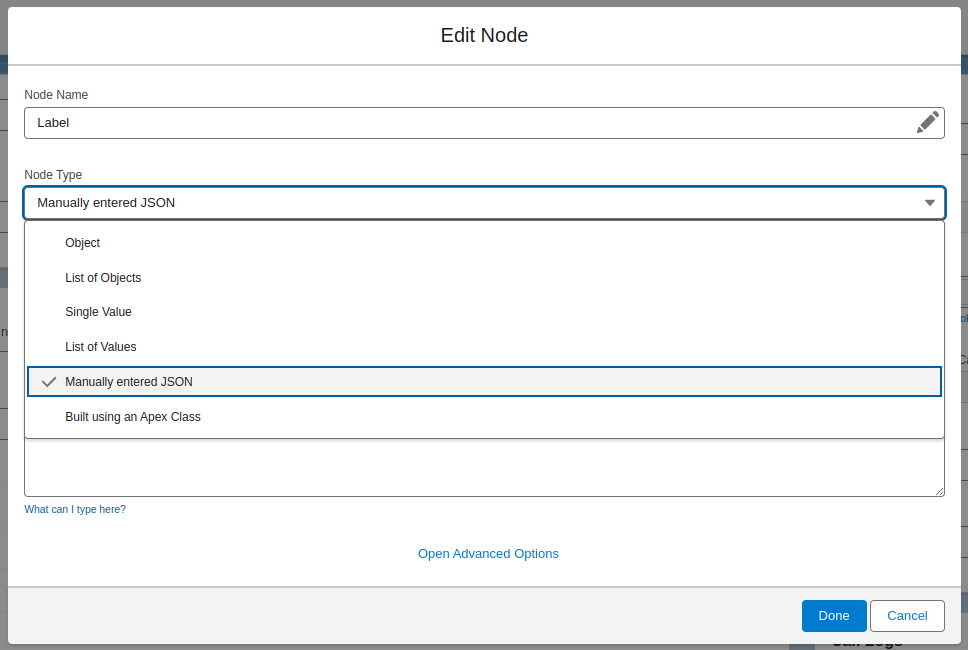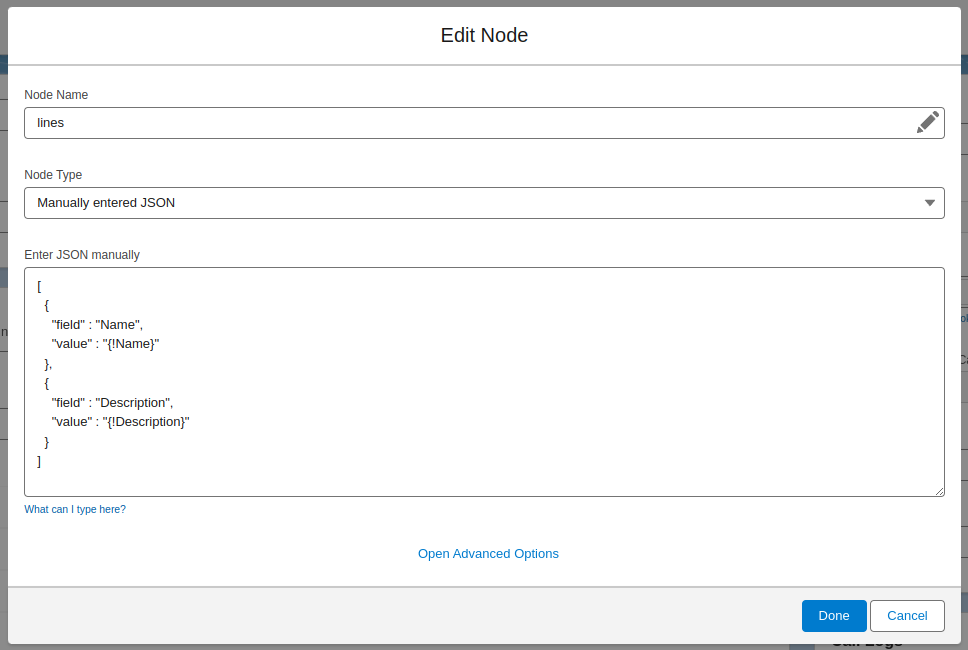Manually entered JSON nodes in JSON Builder
When defining the Request Body in a Callout Template or the Response Body in an Inbound Call Template, you can manually enter the JSON node or the entire body. You also have the option to merge custom fields, custom metadata, or custom settings into the JSON.
To create a manually defined JSON node, select Manually Entered JSON from the Node Type input while editing the node details.
Now enter the JSON structure to be sent in the node in the Enter JSON manually field.
After clicking Done, the custom defined JSON will appear in the JSON builder.
When generating the JSON body, the manually defined JSON node will be generated along with the rest of the body.
Merging data into the manually defined JSON node
You can merge custom fields, custom label, custom metadata or custom settings in the manually defined JSON node.
Merging fields from the main record or related records
You can include merge fields from the selected Salesforce Main Object in your node using this format: {!Custom_Field__c}.
To reference a field from a related object, use the following format: {!Custom_Relation__r.Custom_Field__c}. For example, if the main object is Contact, you can merge the parent account’s name using this format: {!Account.Name}.
Merging custom labels
If you need to include a custom label in the node, you can merge it using this format: {!$Label.Label_Name}.
For example: {!$Label.Custom_Label}
Merging custom metadata values
If you need to include a custom metadata field in the node, you can merge it using this format: {!$CustomMetadata.CustomMetadataTypeAPIName.RecordAPIName.FieldAPIName}.
For example: {!$CustomMetadata.Metadata__mdt.Record1.Field1__c}
Merging custom setting values
If you need to include a field from a List Custom Setting, you can merge it using this format: {!$CustomSetting.CustomSettingAPIName.RecordName.FieldAPIName}.
For example: {!$CustomSetting.List_CS__c.Record1.Field1__c}
If you need to include a field from a Hierarchy Custom Setting, you can merge it using this format: {!$CustomSetting.CustomSettingAPIName.FieldAPIName}. You don’t need to specify the record name because it will use the record best matching the running user.
For example: {!$CustomSetting.Hierarchy_CS__c.Field1__c}





